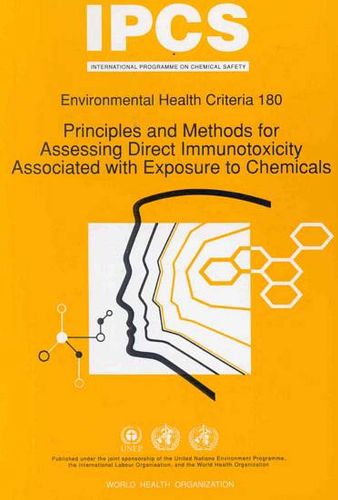Readings Newsletter
Become a Readings Member to make your shopping experience even easier.
Sign in or sign up for free!
You’re not far away from qualifying for FREE standard shipping within Australia
You’ve qualified for FREE standard shipping within Australia
The cart is loading…






A comprehensive guide to general strategies and specific methods for testing the immunotoxicity of chemicals in animal models and humans. Addressed to those seeking a basic introduction to the field as well as specialist researchers the book takes its focus from growing concern in scientific and public communities about the capacity of environmental agents to disrupt normal immune functions and thus increase susceptibility to tumours and infectious diseases. Compounds known to adversely affect the immune system are numerous and include drugs pesticides solvents halogenated and aromatic hydrocarbons and metals. The book draws on considerable recent progress in understanding the immunological consequences of chemical insults as well as increasingly sophisticated methodologies for assessing such effects. Close to 1000 references are included in this authoritative guide. The book opens with a detailed basic introduction to immunotoxicology. An extensive explanation of the function histophysiology and pathophysiology of the immune system emphasizes features that can aid the understanding and interpretation of the pathological changes caused by immunotoxic insults. Chapter two on the health impact of selected immunotoxic agents gives illustrative examples for some 30 chemicals that have been shown to exert immunotoxic effects in laboratory animals and for an additional seven groups of chemicals known to disturb immune functions in humans. For each brief discussions illustrate the chemical’s distinct immunosuppressive properties and the mechanisms by which it exerts its toxic effects on the immune system. Chapter three provides detailed descriptions of a number of tests used in a tiered approach to the assessment of immunotoxicity. Against this background specific nonfunctional and functional tests for the assessment of immunotoxicology in experimental animals are presented and explained in full detail. Information on individual tests includes an explanation of why the test is important the types of data it can yield and exactly how it should be performed. Also included are sections offering advice on assessments in non-rodent species in vitro approaches and approaches using biomarkers in epidemiological studies and monitoring. The chapter concludes with a discussion of good laboratory practices for immunotoxicology studies and procedures for the validation of tests. Chapter five explains the much more complicated procedures needed to assess immunotoxicity in humans. An explanation of general questions to be considered when designing epidemiological studies is followed by presentation of three recommended testing schemes proposed by WHO and other agencies for preliminary evaluation of individuals exposed to immunotoxicants. Specific assays for assessing immune status are also described. The final chapter outlines a step-by-step process of risk assessment specific to the evaluation of potentially immunotoxic chemicals.
$9.00 standard shipping within Australia
FREE standard shipping within Australia for orders over $100.00
Express & International shipping calculated at checkout
A comprehensive guide to general strategies and specific methods for testing the immunotoxicity of chemicals in animal models and humans. Addressed to those seeking a basic introduction to the field as well as specialist researchers the book takes its focus from growing concern in scientific and public communities about the capacity of environmental agents to disrupt normal immune functions and thus increase susceptibility to tumours and infectious diseases. Compounds known to adversely affect the immune system are numerous and include drugs pesticides solvents halogenated and aromatic hydrocarbons and metals. The book draws on considerable recent progress in understanding the immunological consequences of chemical insults as well as increasingly sophisticated methodologies for assessing such effects. Close to 1000 references are included in this authoritative guide. The book opens with a detailed basic introduction to immunotoxicology. An extensive explanation of the function histophysiology and pathophysiology of the immune system emphasizes features that can aid the understanding and interpretation of the pathological changes caused by immunotoxic insults. Chapter two on the health impact of selected immunotoxic agents gives illustrative examples for some 30 chemicals that have been shown to exert immunotoxic effects in laboratory animals and for an additional seven groups of chemicals known to disturb immune functions in humans. For each brief discussions illustrate the chemical’s distinct immunosuppressive properties and the mechanisms by which it exerts its toxic effects on the immune system. Chapter three provides detailed descriptions of a number of tests used in a tiered approach to the assessment of immunotoxicity. Against this background specific nonfunctional and functional tests for the assessment of immunotoxicology in experimental animals are presented and explained in full detail. Information on individual tests includes an explanation of why the test is important the types of data it can yield and exactly how it should be performed. Also included are sections offering advice on assessments in non-rodent species in vitro approaches and approaches using biomarkers in epidemiological studies and monitoring. The chapter concludes with a discussion of good laboratory practices for immunotoxicology studies and procedures for the validation of tests. Chapter five explains the much more complicated procedures needed to assess immunotoxicity in humans. An explanation of general questions to be considered when designing epidemiological studies is followed by presentation of three recommended testing schemes proposed by WHO and other agencies for preliminary evaluation of individuals exposed to immunotoxicants. Specific assays for assessing immune status are also described. The final chapter outlines a step-by-step process of risk assessment specific to the evaluation of potentially immunotoxic chemicals.